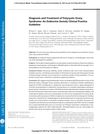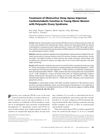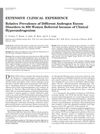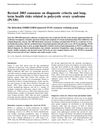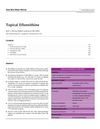Polycystic Ovary Syndrome: Update on Diagnosis and Treatment
May 2014
in “
The American Journal of Medicine
”
polycystic ovary syndrome PCOS androgen excess oral glucose tolerance test metformin endometrial hyperplasia hirsutism acne hormonal therapies oral contraceptives anti-androgens laser treatment topical creams clomiphene citrate sleep apnea continuous positive airway pressure OGTT birth control pills CPAP
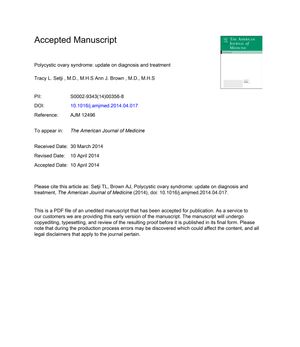
TLDR The conclusion is that early diagnosis and a multi-system treatment approach are crucial for managing PCOS and its associated health risks.
The document from 2014 provides a comprehensive update on the diagnosis and treatment of polycystic ovary syndrome (PCOS), a condition affecting 6-25% of reproductive-aged women. It outlines the complex pathogenesis involving genetic and lifestyle factors and stresses the importance of early diagnosis to manage metabolic risks such as diabetes, obesity, and cardiovascular disease. Diagnostic criteria, including the significance of androgen excess, are discussed, and an oral glucose tolerance test is recommended for all women with PCOS. Lifestyle modifications are the first line of therapy, with metformin for those with pre-diabetes or diabetes, and management of menstrual cycles to prevent endometrial hyperplasia. The document also covers the treatment of hirsutism and acne with hormonal therapies like oral contraceptives and anti-androgens, as well as non-hormonal options such as laser and topical creams. For fertility, clomiphene citrate is the first-line treatment, while metformin is less effective. The increased risk of sleep apnea in women with PCOS is noted, with treatment options like continuous positive airway pressure. The document emphasizes a multi-system, empathetic approach to care, addressing reproductive, cosmetic, and metabolic complications, and the need for mental health support for the psychological impact of PCOS.
